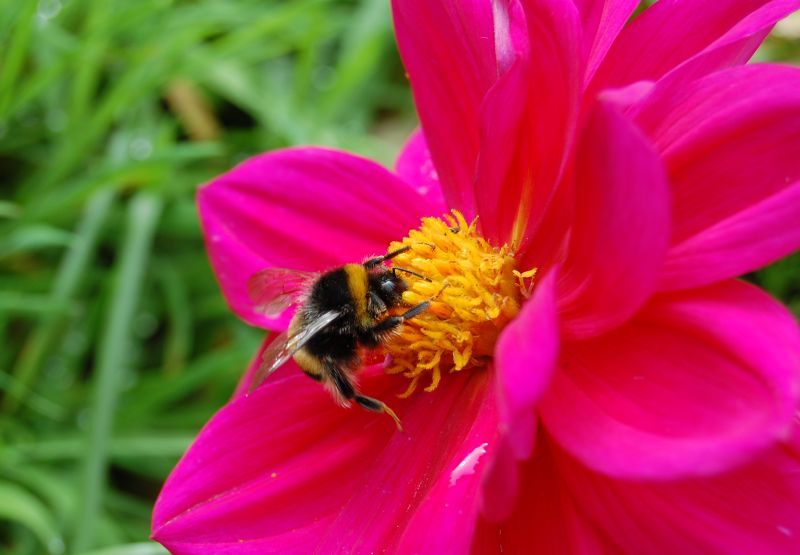Last week I attended an Ars Technica event called Solving the Mysteries of Bees & Ants. I was not disappointed. Annalee Newitz (Editor-at-large for Ars Technica and my new writer crush) did an excellent job interviewing Entomologist/Behavioral Ecologist Neil Tsutsui.
When I arrived at The Mile High Club it had the normal level of bar noise you’d expect from well, a bar. There were plenty of patrons there to drink and hang out–not hear about ants and bees.
Or so they thought.
About halfway through the talk, eyes were glued to the stage, drinks half-forgotten in hand. The bar was quiet, so quiet, when Neil started describing ant regicide.
Added bonus of going in person? Lots of cool science-y people in the audience who were into bugs. I sat next to arachnofever, an Entomology volunteer at the CA Academy of Sciences. She is an expert on tarantulas. Tarantulas!
If you didn’t make it to the live taping at The Mile High Club last Wednesday there is a video here.
On to the ants!
Argentine ants are small dark brown or black ants commonly found in California and they are probably in your kitchen RIGHT NOW. There is this supercolony of these ants, the “Californian large” colony, stretching 900 km (560 mi) along the coast of California. We're talking Humboldt to San Diego.
Polyergus ants are fairly large and red. They raid other colonies, steal babies, and make those babies their slaves. These captive babies end up doing all the work: excavation, defense, foraging, baby care. A Polyergus Queen will go on a raid to kill another Queen and set herself up as a new Queen. She must then produce enough workers to keep the colony going.
Fire ants operate differently. Their Queen won’t kill the other Queen, she’ll just ride on her back forever as a social parasite.
More ant facts? Glad you asked.
Ants are largely subterranean.
Ant mandibles are used for lots of different things (eating, fighting, digging).
Ants taste and smell with antenna. They have a great sense of smell: How ants' amazing sense of smell controls their lives.
Dracula ants drink the blood of their babies. What!?
Ants “graduate” to tasks that take them farther away from the nest, so the most dangerous jobs are done by older ants: Ants Become Job-Hoppers as They Age.
Individual ants can come together to become a fluid SUPERORGANISM.
Ants will attack non-relatives. One question that chemical ecologists are trying to answer is, "How exactly do ants recognize who is a nest mate or not?"
Bees
Originally bees were used for hive products like honey or wax. Now we mainly use bees for pollination projects. In experiments where bees are collected in the same place at multiple points in time, each bee is a “time capsule.” Pollen helps describe the plants the bees came into contact with. Honey can also carry an isotope that is a clear signature of air pollution. Likewise, honey from a radioactive area can show radioactivity.
Catalina is bee researcher heaven. “The isolation and minimal human habitation of the 96-square-mile island since honey bees were introduced 110 years ago also permits an unparalleled opportunity for studies of natural colony distribution, foraging patterns of colonies, and competition between colonies.” - The Honey Bees of Santa Cruz Island
African bees and German Black bees were mentioned in the talk. While I was researching those types of bees, I stumbled on Halictidae or “Sweat Bees.” How did we not get to Sweat Bees? THEY DRINK YOUR SWEAT.
Someone asked about "anarchist bees" during Q&A. I googled "anarchist bee" and discovered this gem in The British Bee Journal from 1894:
Anarchist bees. –It appears that there is a method of producing anarchist bees. This method, from experiments by Dr. Büchnerm is both simple and easy. It consists of subjecting the worker bees to a diet of honey and alcohol.
These inesec’s [sic] quickly take a liking to this pernicious food. Under its influence they first lose the instinct to work so normal with bees, they then lose that of hierarchy, usually not less strong in this species. They become anti-social, revolters, and without the slightest scruple abandoned themselves to robbery and brigandage.
Want to get involved as a Citizen Scientist? Here are some ways.
Information can be found on the Backyard Diversity Project webpage.
Have a pool? If you are willing to scoop insects once a month and sent them to a lab, the Pools Project might be for you.
The ANT-vasion Project is attempting to separate fact from fiction when it comes spices that allegedly repel ants. I heard cinnamon works? Maybe I need to find out for myself.
Neil Tsutsui also encouraged us to check out the iNaturalist app.
Cool words and phrases I will try to causally drop into conversation
Brood - is ant larvae and pupae (I misheard this as brew, like “ant brew”)
Mutualistic symbiosis - A symbiotic relationship between individuals of different species in which both individuals benefit from the association
Non-destructive cannibalism - can it be, though, really? looking at you, Dracula ants
Haplodiploidy - is a sex-determination system in which males develop from unfertilized eggs and are haploid, and females develop from fertilized eggs and are diploid.

